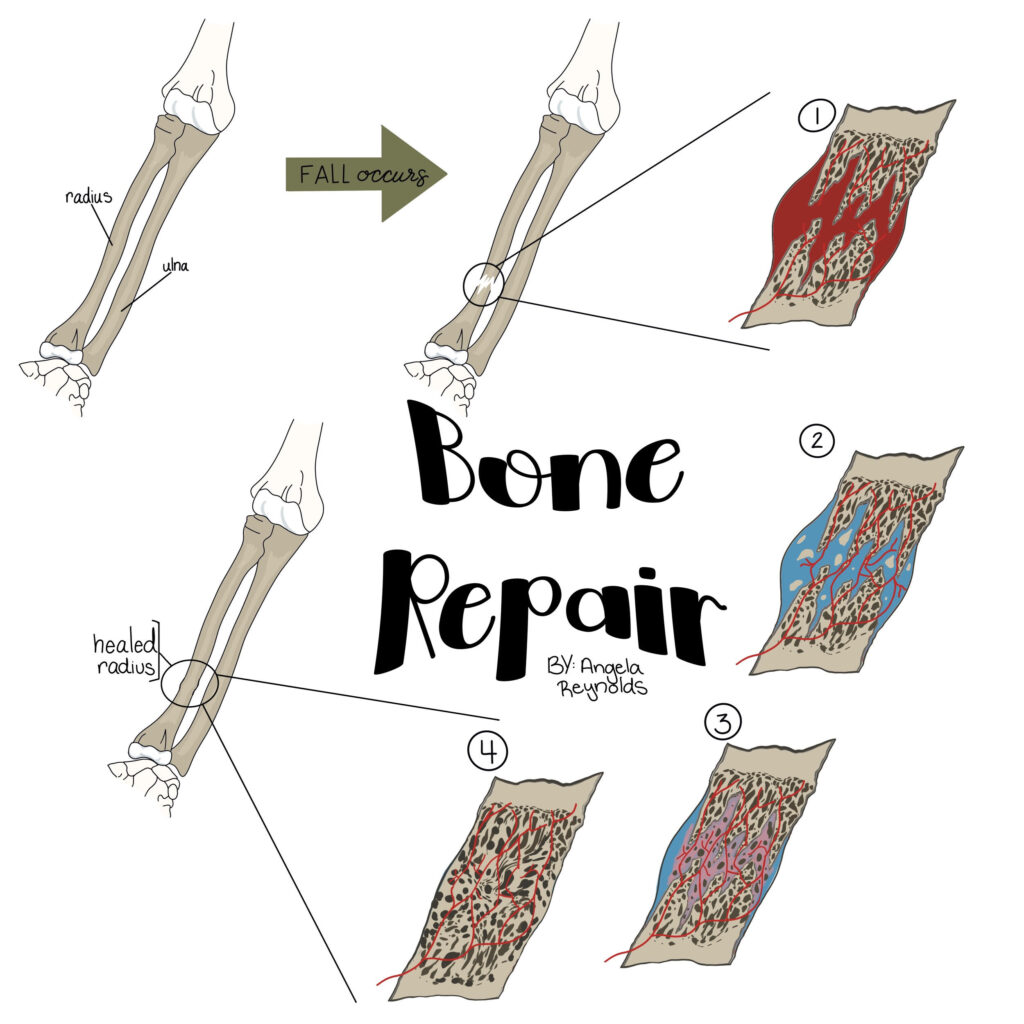I decided to create a step by step drawing on Procreate to show the steps of how the bone repairs itself from the inside. I did not want to concentrate on the type of fracture, so I did my best to pull the viewers attention to the main four steps of the internal healing process of the bone. In my example, the mechanism of injury was a fall of an adult who tried to catch themselves with their arm; an average sized adult has enough weight to force a bone to break. In my area of work, a distal radius break is common within adults and reaches a 17.5% of fractures (Ochen et al., 2020). This fracture is classified as a nondisplaced, closed fracture. In the ER, we would page Orthopedics so that they may view the X-rays and advise on the type of splint they would need to prevent further injury. The splint, with a follow up and casting would assist the process for the bone, radius in this example, to heal properly.
The healing process begins as soon as the trauma has resulted with a fractured bone. A hematoma begins to form due to the disturbed blood vessels. The blood that formed the hematoma will clot or coagulate, causing a network of fibrin to allow inflammatory cells, bone marrow and progenitor cells to congregate within an extracellular matrix. The hematoma will take several days to heal due to the removal of the fibrin matrix. New blood vessels begin to form from pre-existing vessels which aids in granulated tissue replacing the fibrin network. As growth factors and progenitor cells are promoting the continuation of healing, cartilage is beginning to form a callus around the fracture giving stability to the injured bone. Growth factors tract more blood vessel formations within the newly formed callus. The process of osteoblast leads to the cartilage mineralizing into a hard callus that now takes the place of the fracture sight (Lafuente-Gracia et al., 2021). As shown within my digital drawing, the end result of the healed radius is not smooth like bone before the accident.
Ochen, Y., Peek, J., van der Velde, D., Beeres, F. J. P., van Heijl, M., Groenwold, R. H. H., Houwert, R. M., & Heng, M. (2020, April 1). Operative vs nonoperative treatment of distal radius fractures in adults: A systematic review and meta-analysis. JAMA network open. https://www.ncbi.nlm.nih.gov/pmc/articles/PMC7180423/
Lafuente-Gracia, L., Borgiani, E., Nasello, G., & Geris, L. (2021, September 30). Towards in silico models of the inflammatory response in Bone Fracture healing. Frontiers in bioengineering and biotechnology. https://www.ncbi.nlm.nih.gov/pmc/articles/PMC8514728/

